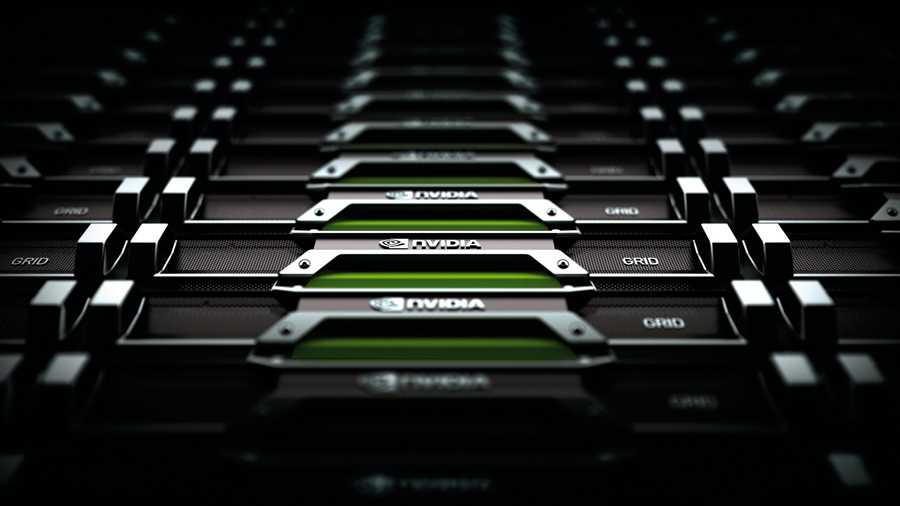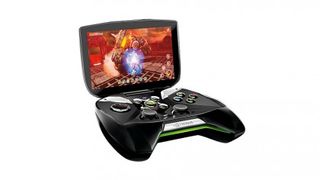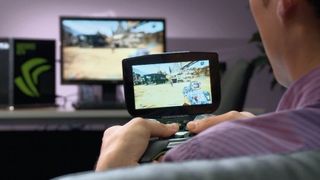How game streaming will change the way you play forever
The future of gaming is all about taking your games anywhere on almost any device

Gaming AFK is Nvidia's nifty little catch-all tag for its game streaming initiative: gaming away from the keyboard.
It's actually quite a complex concept, including everything from Nvidia's upcoming portable games console - known as Project Shield - to the cloud-based GRID initiative, the GeForce Experience app on the PC and your Steam games library. It even includes PC graphics chips. Yeah, those hopelessly old-fashioned contraptions physically wired up to silly bits of board. Remember them?
But what will this all mean for PC gaming? What hardware and software will you need? What games will you be able to play and on what devices? Will it be a walled, Nvidia-only garden of streaming games? Or will AMD and its faithful gamers somehow get in on the party?
The latter is an intriguing question in the context of the next generation games consoles, the first details of which are now emerging. Sony, for instance, is known to be planning game streaming for the PlayStation 4. And we know both the PlayStation 4 and the new Xbox One console from Microsoft are based on pure PC technology for both CPU and GPU - and AMD technology, at that.
Then there's the question of how soon this is all coming and how local streaming using your PC fits with cloud gaming. Is local streaming just a stepping-stone on the way to ubiquitous cloud gaming? Or does it have advantages that make it a long-term proposition?
Yes, there are questions to be answered - but if this stuff takes off, it's going to change the way you game forever.
Local vs cloud
When it comes to game streaming, the first thing we need to grasp is the difference between what we'll call local and cloud-based game streaming. The latter has been available for some time from services like OnLive and Gaikai. We're talking about games run on a server farm, floating goodness knows where.
Get the best Black Friday deals direct to your inbox, plus news, reviews, and more.
Sign up to be the first to know about unmissable Black Friday deals on top tech, plus get all your favorite TechRadar content.
Not actually floating in the atmosphere, of course, but notionally floating in what's known as the computing cloud. In that scenario, all you need is some kind of dumb client with a simple web browser, like an Android tablet.
All the work rendering the game is done on a remote server, so the service provider has the keys to pretty much everything. It even chooses the rendering hardware and sets the visual quality. Gaikai actually gives you access to a few graphics settings in some games, but you get the point. It's up to the service provider to negotiate access to various game libraries and catalogues.
It's this kind of game streaming that's had us a little bit nervous about the future of PC gaming. If all the heavy lifting is done by the server, leaving the local device or display little to do but decode a video stream, wouldn't that be the end of PC gaming and PC gaming hardware as we know it?
That's the more familiar half of the equation. The latest development and one that seems more immediately friendly and exciting for the PC is local game streaming. The idea is that you own and supply everything needed for game streaming - so you keep your big-iron PC tower and it still runs your games. A lot of the time, you'll even use that PC just as you do right now. Sitting in front of it with keyboard and rodent, fragging for fun, same old jazz.
The difference is that you have the option of using your wireless home network to stream those games to other devices, such as tablets, HDTVs and in the case of Nvidia's AFK effort, its new Shield gaming console. If all that makes you think there's local and cloud-based game streaming, and never the twain shall meet, it's actually a little more complicated than that.
Think of it more as a continuum of gaming - from gaming on a conventional PC to a handheld and an HDTV. Where the game is rendered no longer matters.
The Shield project

If that's the theory, what's the practice like? One aspect we can really get to grips with is Nvidia's local network streaming app using the Project Shield console.
The Project Shield console is a powerful gaming device in its own right, thanks to Nvidia's Tegra 4 chip. But it's an Android device, not a PC, and its puny in rendering terms when compared with a good desktop gaming rig.
What it does have, however, is a 720p HD display that's just begging to be stuffed with cutting edge visuals. And, of course, it's very portable, allowing you to kick back on the sofa - or not get out of bed on a Sunday morning before booting up Battlefield 3. Now there's a thought.
But how does it all work? First, you'll install Nvidia's GeForce Experience app on your PC. GeForce Experience does a lot of sexy things, even if you're just playing on the PC itself. It can auto-optimise your game settings, for instance, or keep your graphics drivers up to date. Which can be handy if you don't know your ambient occlusion from your anisotropic filtering.
It's also the enabler for using your PC as a game-streaming home server. With GeForce Experience installed, you fire up that Project Shield portable and navigate to the PC Connection app. You'll then have a few options from there.
Some of the big digital distributors, including Valve via Steam and EA have their own sub-app within PC Connection. But you can also play any game installed on your PC courtesy of GeForce Experience's game profiles. Just as the graphics driver detects games and applies optimisations, GeForce Experience knows what games you have installed and can serve them up to compatible remote devices.
Fear the lag

Once you fire the game up on Project Shield, it will either run on the PC in mirror mode or in the background, depending on your preference. Either way, Nvidia says lag levels are, crucially, very low.
In fact, lag or latency is arguably the biggest problem facing game streaming of all kinds. There's no doubt games can be rendered on PCs or servers and streamed to remote devices, either over the internet or local networks. There's also no doubt client devices can smoothly decode the game stream. The big challenge is reducing the lag levels inherent in streaming to playable levels for all classes of gaming.
After all, with cloud gaming, you're sending your mouse, keyboard or controller inputs to a remote server that might be hundreds, or even thousands of miles away. The server must then respond and send the video frames back to your PC.
You might think that's a recipe for unavoidable, unplayable lag. And to a degree, you'd be right. Independent testing of OnLive and Gaikai's game streaming services has measured lag in the 150ms to 300ms range. That's certainly good enough for strategy games and other genres that don't rely on hair-trigger responses. But even the bottom end of the range rules out first person shooters, especially if we're talking playing online.
Sadly, nobody has been allowed to independently measure Nvidia's local network GeForce Experience tech. However, given that it's a local network, the challenges are much less. For cloud gaming, simple laws of physics come into the equation. You can only be physically located so far from a server before you hit unavoidable lag.
As it stands, we've little doubt Nvidia's local streaming is quick enough for most gaming genres. The one possible exception may be first person shooters, particularly online shooters where low latency is absolutely critical for competitiveness. That's going to be the big test for Nvidia's local streaming technology.
On the next page: streaming games to your HDTV.
Technology and cars. Increasingly the twain shall meet. Which is handy, because Jeremy (Twitter) is addicted to both. Long-time tech journalist, former editor of iCar magazine and incumbent car guru for T3 magazine, Jeremy reckons in-car technology is about to go thermonuclear. No, not exploding cars. That would be silly. And dangerous. But rather an explosive period of unprecedented innovation. Enjoy the ride.
Most Popular

